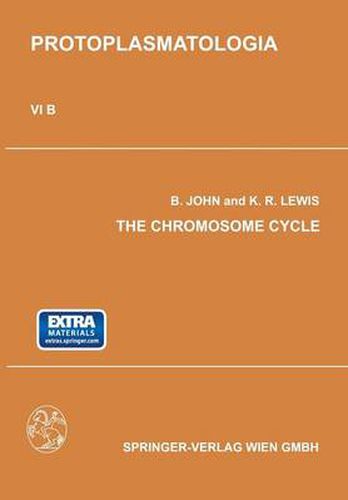Readings Newsletter
Become a Readings Member to make your shopping experience even easier.
Sign in or sign up for free!
You’re not far away from qualifying for FREE standard shipping within Australia
You’ve qualified for FREE standard shipping within Australia
The cart is loading…






This title is printed to order. This book may have been self-published. If so, we cannot guarantee the quality of the content. In the main most books will have gone through the editing process however some may not. We therefore suggest that you be aware of this before ordering this book. If in doubt check either the author or publisher’s details as we are unable to accept any returns unless they are faulty. Please contact us if you have any questions.
neoessity for making it. Yet, clearly, the problem of development is largely one of filling the vacuum between determinant and character (DARLINGTON 1951). Nowadays the chromosome theory can be presented in much greater detail and with utter confidence, but its two main features remain the same. However, while the role of the chromosomes in heredity and development has been appreciated for a long time, the manner in which they perform their genetic and epigenetic functions has become amenable to critical investigation only in recent years. There is, therefore, still an unmistakable tendency to think of chromosomes in terms of the discrete threads of cell division and, in keeping with this conception, the chromosome cycle is gen erally considered in relation to the microscopically visible changes in morphology which occur during the mechanically active phases of mitosis and meiosis. Chromosome phenotype, however, changes not only during division but throughout the cell cycle. The changes which occur during interphase are, of course, scarcely revealed in morphological modifications of the restless resting nucleus. Consequently they are less obvious and correspondingly less amenable to investigation. This accounts for the concentration on the countable karyotype, with its visible properties of pairing and pycnosity, and the measurable movements of separation and segregation.
$9.00 standard shipping within Australia
FREE standard shipping within Australia for orders over $100.00
Express & International shipping calculated at checkout
This title is printed to order. This book may have been self-published. If so, we cannot guarantee the quality of the content. In the main most books will have gone through the editing process however some may not. We therefore suggest that you be aware of this before ordering this book. If in doubt check either the author or publisher’s details as we are unable to accept any returns unless they are faulty. Please contact us if you have any questions.
neoessity for making it. Yet, clearly, the problem of development is largely one of filling the vacuum between determinant and character (DARLINGTON 1951). Nowadays the chromosome theory can be presented in much greater detail and with utter confidence, but its two main features remain the same. However, while the role of the chromosomes in heredity and development has been appreciated for a long time, the manner in which they perform their genetic and epigenetic functions has become amenable to critical investigation only in recent years. There is, therefore, still an unmistakable tendency to think of chromosomes in terms of the discrete threads of cell division and, in keeping with this conception, the chromosome cycle is gen erally considered in relation to the microscopically visible changes in morphology which occur during the mechanically active phases of mitosis and meiosis. Chromosome phenotype, however, changes not only during division but throughout the cell cycle. The changes which occur during interphase are, of course, scarcely revealed in morphological modifications of the restless resting nucleus. Consequently they are less obvious and correspondingly less amenable to investigation. This accounts for the concentration on the countable karyotype, with its visible properties of pairing and pycnosity, and the measurable movements of separation and segregation.